“I consider it a good rule for letter-writing to leave unmentioned what the recipient already knows, and instead tell him something new.” (Attributed to Sigmund Freud)
Over recent years, in a crude and simplistic way, I’ve noted the length and main content (but mainly the length) of the annual grant letter from the Secretary of State or Minister to HEFCE.
Last year’s was, I thought at the time, possibly the last ever letter to HEFCE and it does rather look as if is this was the case as we now have a letter from the Minister for Universities, Science, Research and Innovation to the new body (and successor to HEFCE) the Office for Students, setting out his expectations.
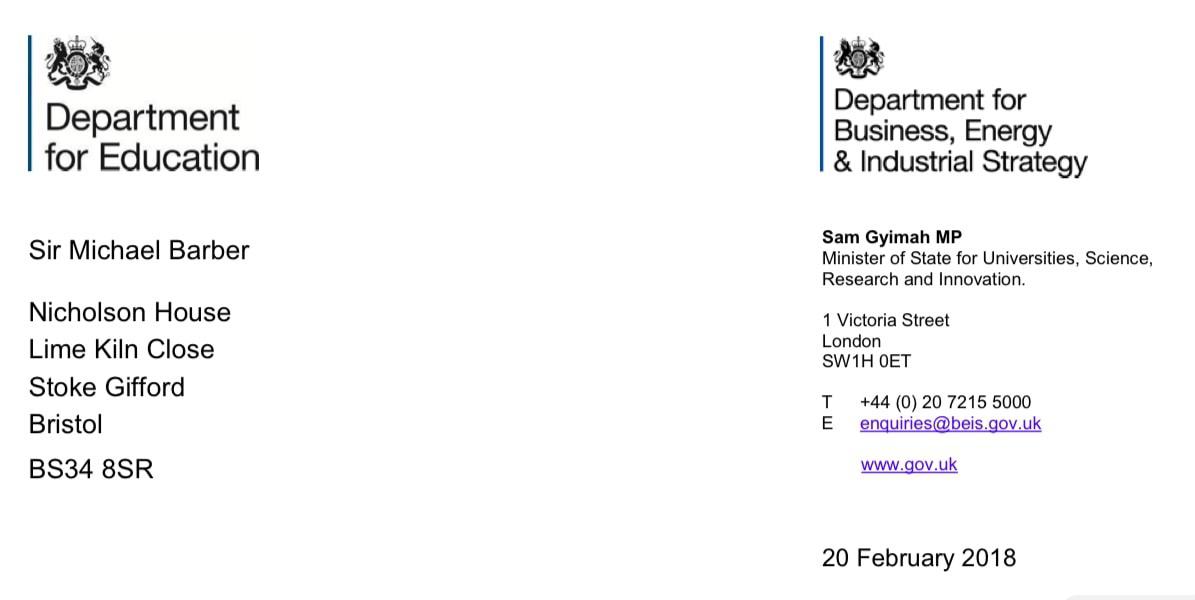
What’s a bit distinctive here is that, unlike most letters, the recipients are usually already pretty well aware of its contents. You can bet that the DfE, BEIS and OfS have been exchanging drafts for quite a while now, along with all of the other documents. So, also unusually, the letter is actually intended for a load of other people rather than the addressee. But it is still a real letter, or at least looks like one, which is a little bit special.
But one of the most important indicators of a real letter is that the author signs it. Previous signatures we have known and loved over the years:



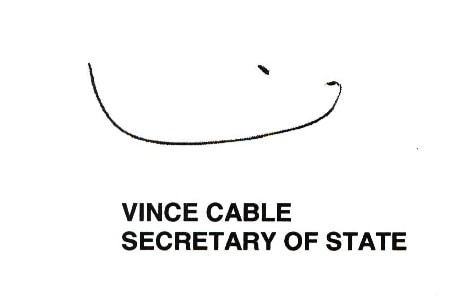
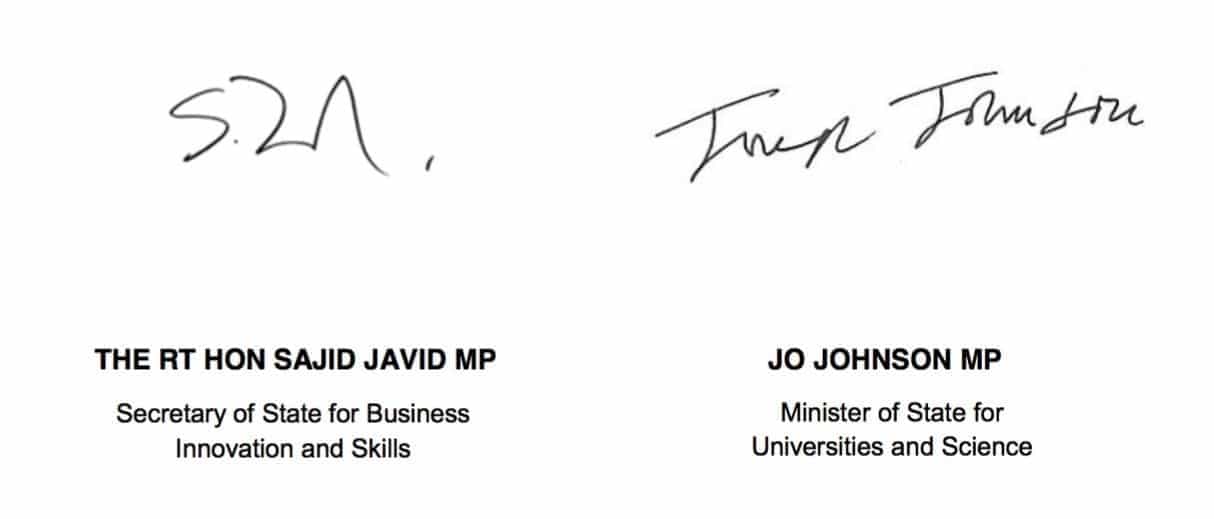
But no signature from Sam! This is really isn’t a very good start to the new regime, is it? It all seems a tad impersonal.
Looking ‘beyond the register’
What does the first letter of the new era cover then? Well, it is full of language about the new era, key milestones etc and confirms that this is the ‘first annual statement of Government priorities for the OfS’ under ‘the new regime’ before talking about the need for the new agency to demonstrate ambition, to champion students and to operate as a new market regulator with a new mission.
Moving away from the ‘one-size-fits-all’ approach the new framework is going to focus on protecting students’ interests while reducing the regulatory burden (somehow) and the Minister exhorts the OfS to be bold in implementing the new model.
As part of this and to ensure the sector is open to new ‘cutting edge providers’ (thanks for that from the dull blades already around) the OfS is encouraged to ‘look beyond its register’ (perhaps the most bizarre instruction of the lot) to understand and draw in new, as yet unregulated, operators, thereby driving choice and competition.
Beyond this opening stuff on ‘Creating a new regulatory system and ensuring a smooth transition’ it then goes on to cover:
- Student experience, quality and choice, including addressing harassment, making ‘campuses places of tolerance for all students’, ‘entrenching’ quality and standards and challenging grade inflation. Also, TEF, LEO, credit transfer and, of course, freedom of speech where OfS is asked to be a champion.
- Access and participation
- Delivering value for money for the student and taxpayers
- Industrial strategy and skills
- Collaboration with UK Research and Innovation (UKRI)
- Strategic priorities for funding which are ‘broadly consistent with those set for HEFCE’
- 2018/19 deliverables and supplementary guidance
- Developing the OfS
The long and short of it
So much for the headline content of the letter, what about the key issues like how long was it this time? Does it beat the recent high water mark of 2016 which was the longest since 2003? Or the shortest ever from 2010? Is the future long or short?
This year, at 19 paragraphs it’s significantly shorter than typical examples of this kind of letter which is currently running at an average of just over 32 paragraphs. Indeed it equals the fourth shortest of all time. The trend is still downwards and the upturn of the last few years has now been reversed. The missive itself is barely 4 pages long but includes a bonus 15 pages of appendices, 9 pages of which are the detailed ‘deliverables’. So let’s have a look at the trend:
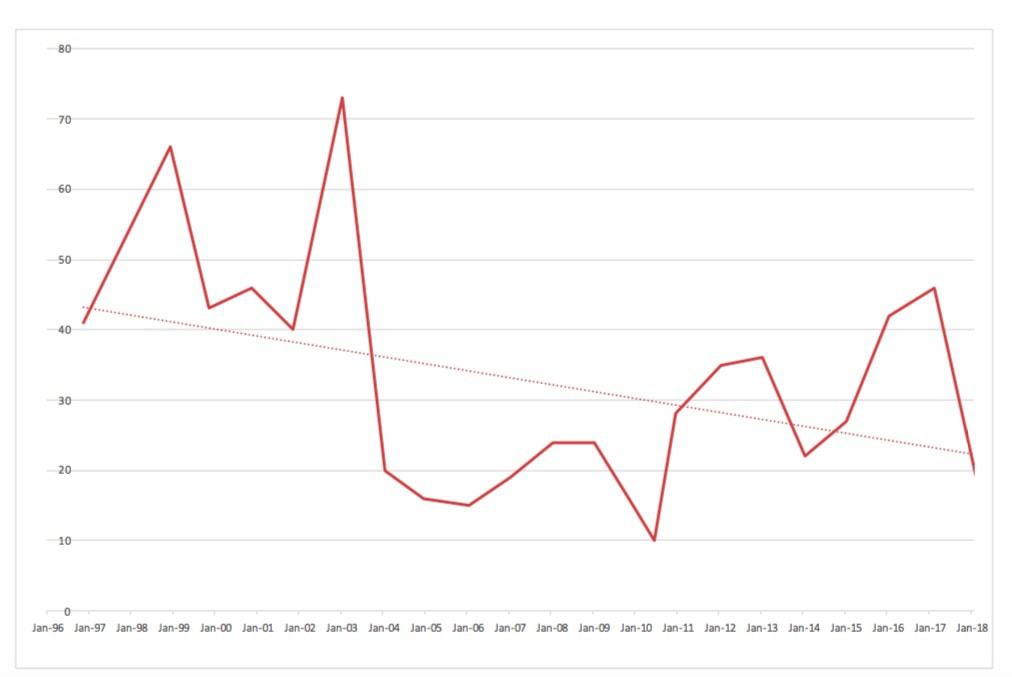
So, it could very much be seen as a new shorter version BUT whereas previous letters have had just detailed financial numbers in the appendices, this one has a very chunky annex setting out some pretty specific requirements – described here, very much in language that Michael Barber will understand, as ‘deliverables for 2018/19’ – building on the issues in the body of the letter. So, it is reasonable to argue I think that we should really count these paragraphs too. And if we do, we get a slightly different graph.
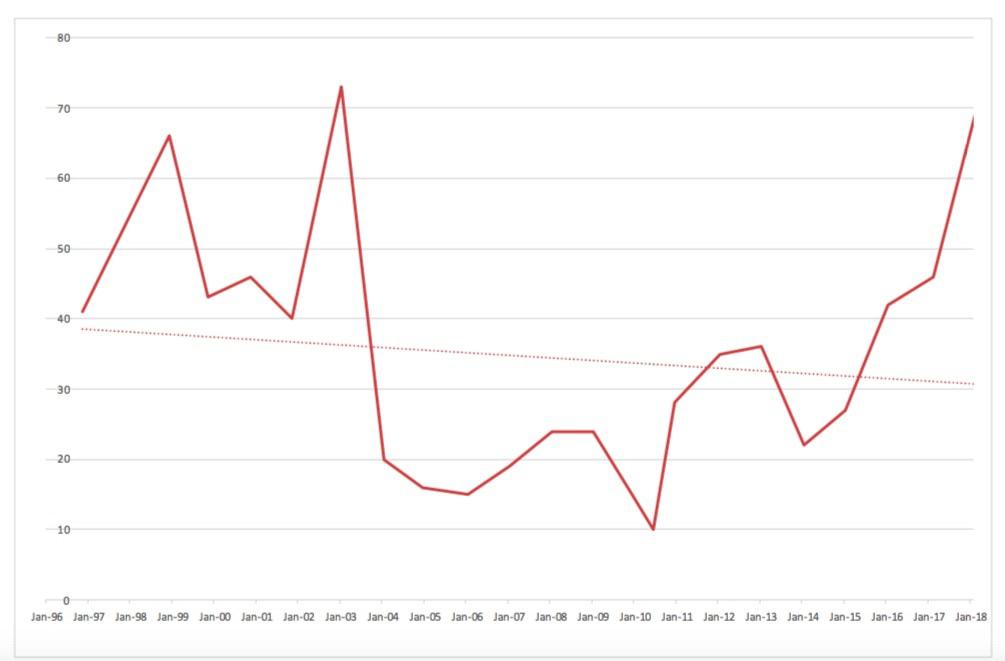
And just to note these are pretty clear directions and a much more detailed exposition of the points made in the core letter. So, accepting these paragraphs as part of the letter would bring us to 69 paragraphs, making this the second longest epistle since 1996 (January 2003 being the biggest ever) and dragging the average up a couple of notches.
But there’s more and there were a number of other accompanying documents which just happened to be published on the same day. Sixteen headline documents, plus a further ten annexes and templates, have been released across OfS and the DfE.
If we added all these together then the paragraph count would be off the scale…
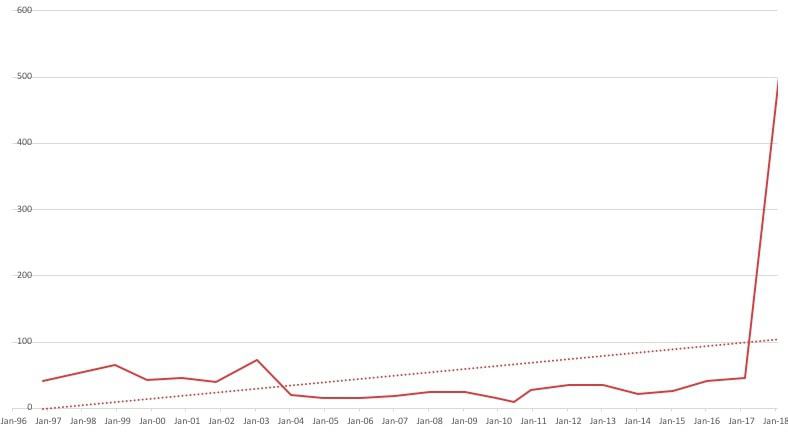
Best avoided therefore.
Yet more letters of note
As some will be all too well aware, I have repeated and revised this stuff every year. Rather than force everyone back to previous posts I have, yet again, simply updated the previous summary of the key issues here. You’ll find this especially handy if you are new to this niche area. Or not if you are already completely on the ball or really could not care less about such trivia.
Those with longer memories will have fond recollections of the briefest of grant letters from the University Grants Committee (UGC) which simply set out the amount of money available for disbursement. Many will long for the golden age of five year funding settlements under the UGC. Whilst it could reasonably be argued that the UGC served as an effective buffer between the state and the universities, the options for the Higher Education Funding Councils, and in particular HEFCE, were much more limited as the directives from government on spending have become ever more detailed and prescriptive. And this new approach for the OfS makes things even more directive.
Fortunately though we are able to examine all of the historical details of these as HEFCE has a nice collection of funding letters going back to 1996. Let’s hope the OfS archives will retain this treasure trove for the delectation of future higher education scholars.
This decidedly dubious summary of these letters draws on this collection but refers only to English funding allocations. I’m sure the Welsh and Scottish funding councils and their Northern Ireland counterpart receive similar missives from their respective governments but it is beyond my capacity to deal with them I’m afraid.
So, as this “new chapter in higher education”, as the Minister describes it, begins, let’s take the opportunity to look at the history.
The length of funding letters has seen two peaks in the last 14 years: January 2003’s letter was 73 paragraphs long and the December 1998 note ran to 66 paragraphs. The November 1999, November 2000 and December 2001 letters ranged from 40 to 46 paragraphs but the January 2004 letter and subsequent missives tend towards the more traditional brevity of only 15-25 paragraphs of instruction to HEFCE. A decline which matched the general trend of public funding for higher education perhaps until that is we got to 2016 when we shot back up to 42 paragraphs.
Just for completeness then here are some of the details about English Higher Education’s most exciting epistles:
- The first letter in this series is the last prepared under the previous Conservative government, way back in November 1996. This 41 paragraph note (signed by a Civil Servant) covers: linking funding to assessment of teaching quality, expanding part-time provision, the importance of closer links with employers, not wanting to see longer courses, a planned reduction in student numbers by 2,000 for the following year and keeping the participation rate at around 30%.
- The December 1998 letter is the first New Labour funding letter. At 66 paragraphs it is one of the longest in recent times and the last one to carry the name of a senior Civil Servant rather than the Secretary of State. Topics covered include sector spending, lifelong learning, increasing participation, maintaining quality and standards (a recurring theme down the years), widening access, promoting employability, research investment, capital spend, tuition fee arrangements and Year 2000 issues (we were all worried then).
- The November 1999 letter, 43 paragraphs long, provides David Blunkett with the opportunity to wax lyrical on the importance of maintaining quality and standards, increasing participation and employability, widening access, equal opportunities for HE staff, dealing with student complaints, new capital funding, pfi/ppp opportunities, research funding and HE pay.
- David Blunkett, in his November 2000 letter, which runs to a sprightly 46 paragraphs, makes some big points on widening participation as a key priority, business links and the e-university.
- In November 2001 Estelle Morris provides a neat 40 paragraph letter which gives lots of direction on widening participation, maintaining quality and standards, strengthening research, the importance of links with industry and communities, as well as something on the value of the e-Universities project (remember that?) and, last but not least, social inclusion.
- January 2003 represents the high water mark of recent funding letters: in 73 action packed paragraphs Charles Clarke, in his first outing as Secretary of State, is clearly keen to lead the way. The letter covers, among other things, improvement in research, expanded student numbers, foundation degrees, widening participation, improving teaching and learning and increased knowledge transfer. As if that were not enough we also have the establishment of the AHRC, the introduction of a new quality assurance regime but with reduced burdens for institutions (yeah, right), credit systems, FE partnerships, expanded student numbers and new investments in HE workforce development. A real blockbuster of a letter.
- The January 2004 message from Charles Clarke comes in at 20 paragraphs in just over 4 pages with reducing bureaucracy, building research and quality and standards and the establishment of Aimhigher as its central features.
- December 2004 brings a Christmas treat from everyone’s favourite Santa, Charles Clarke. With just 16 paragraphs and 4 pages of direction Clarke stresses the importance of maintaining the unit of funding for teaching, controlling student numbers and making efficiency gains.
- The January 2006 letter, a first and last offering from Ruth Kelly, comes in at a modest 15 paragraphs and 4 pages. No huge surprises in the text with employer-led provision, more widening participation, additional research and capital funding and a strong steer on reducing bureaucracy being the primary features. Additional points to note include equal opportunities for HE staff, efficiency gains, the new conditions which accompany the new tuition fees regime and reference to access agreements. What’s not to like here?
- January 2007’s is a punchy 19 paragraphs and merely five pages from Alan Johnson (his one and only letter). Despite the wordiness there isn’t a huge amount in here beyond employer engagement, growing foundation degrees and a lot on widening participation.
- January 2008: as with its successor letter this one is 24 paragraphs and 7 pages long (and note the online version on the HEFCE website is erroneously dated 18 Jan 2009). In this funding letter Denham indicates that his priorities are increasing student numbers, developing employer part-funded provision, and widening participation. The letter also refers to encouraging HE to develop stronger links with schools and colleges, greater investment in research, the importance of STEM, a green development fund, closer measuring of performance, and the establishment of the fund-raising match-funding scheme.
- January 2009’s letter is 7 pages and 24 paragraphs long and in it John Denham seeks to encourage HE to support the economy through recession, wider engagement with business, promote employer-led provision, innovative ways to support business, promotion of STEM subjects and widening participation and extending fair access. Additionally, there is the confirmation of the ‘university challenge’ with 20 new HE centres to be established, emphasis on the maintenance of quality and standards, plans for continuing to reduce regulation, commitment to dual support as well as the development of REF, steps to tackle climate change and bearing down on over-recruitment by institutions.
- The December 2009 letter from Lord Mandelson comes in at 15 paragraphs. This short note follows up on Higher Ambitions (which, in case you had forgotten, “sets out a course for how universities can remain world class, providing the nation with the high level skills needed to remain competitive, while continuing to attract the brightest students and researchers”) and also covers the Economic Challenge Investment Fund, wider and fairer access to HE, increasing the variety of undergraduate provision, new funding incentives to deliver higher level skills, developing REF, new developments in quality assurance including the publication of a standard set of information for students, engaging with communities and penalizing institutions which over-recruit students.
- June 2010 sees the first funding letter from the new coalition government: Cable and Willetts give us 10 brief paragraphs covering initial savings, efficiencies and cuts but also 10,000 extra places (but with strings). It was the shortest funding letter to the Council in at least 14 years and undercuts all letters under the previous government by some way. It was also the first outing for Vince Cable’s smiley signature.
- There was a bit of a steep change with the 2013 letter. Not only does it offer even more directions to HEFCE, at 36 paragraphs and eight pages it is the second longest of the four to date issued by the coalition Secretary of State and the Minister and confirms a return to the sterling epistolary efforts made by the previous government.
- More recently in 2014 it was back to a more perfunctory 22 paragraphs, excluding the covering letter, or 26 if you include the substantive comments in the letter.
- 2015 saw the final letter of the coalition era – a rather snappy 27 paragraphs spread over five pages of a 12 page package. But, as with previous years, there was quite a lot of the self-congratulation contained in a three page covering letter.
- At 42 paragraphs the 2016 note was significantly longer than recent examples of this kind of missive and was the longest since the beginning of 2003. It almost takes us back to the 41 paragraphs of the opening one of the series in 1996.
- And then we have the final one, the last letter, the ultimate epistle. At 46 paragraphs it was significantly longer than the average of just under 32 paragraphs and in fact came in as equal third longest of all time.
So, that’s your lot folks. Forward then to a bright new future of looking beyond the register and appendices stuffed full of deliverables!












